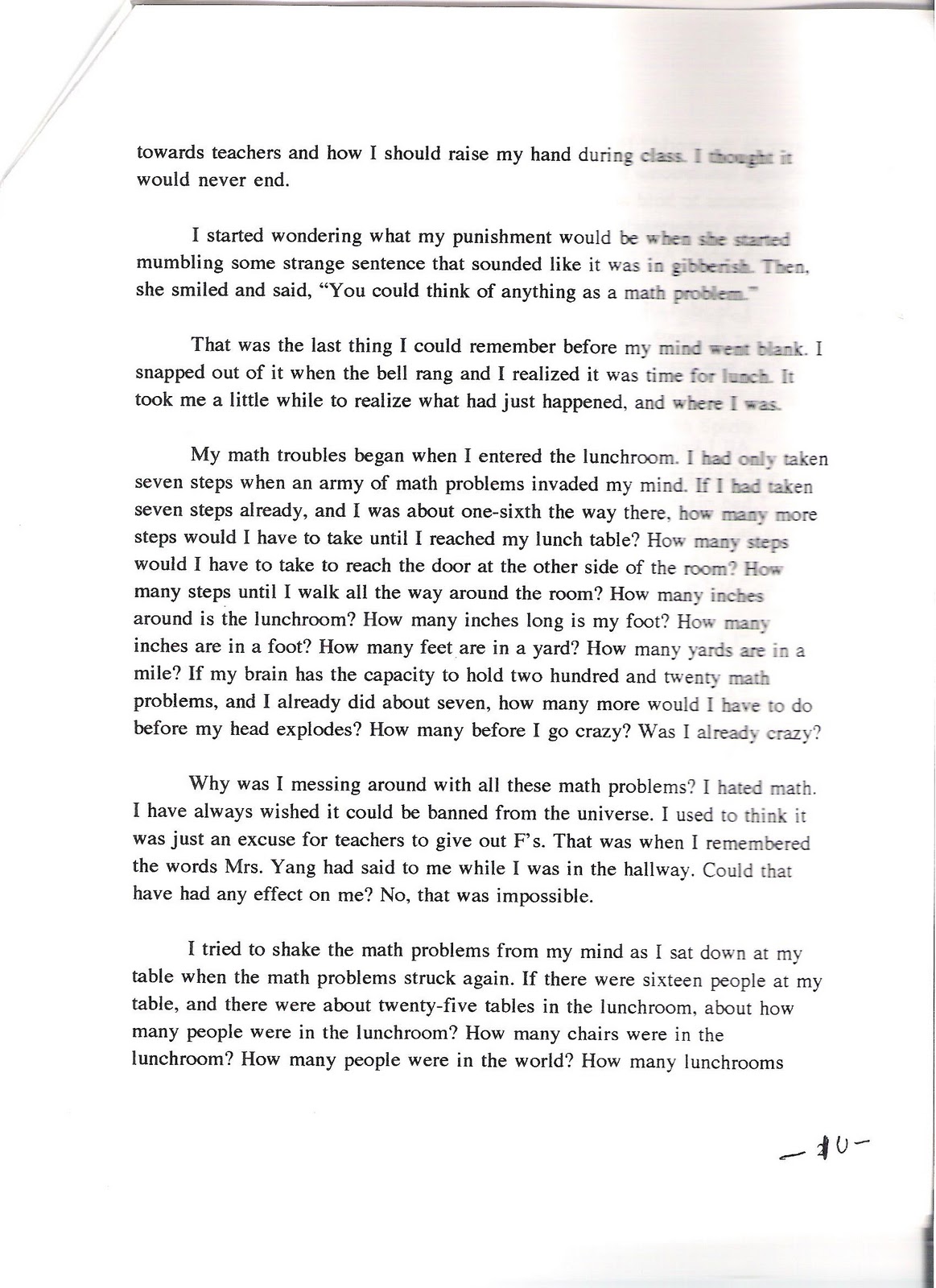

Estimate how many M&Ms you would eat if you had to measure the Mississippi River with M&Ms.3.

Estimate how many M&Ms it would take to measure the length of the Mississippi River.2. For example:“I take the milk out for my cereal and wonder: How many quarts in a gallon? How many pints in a quart? How many inches in a foot? How many feet in a yard? How many yards in a neighborhood? Haw many inches in a pint? How many feet in my shoes?”Or this:"1. Fibonacci tells her students, “You know, you can think of almost everything as a math problem.”And that is exactly what the boy begins to do, in a way that always ends humorously.

He is so clever, and manages to turn topics like science and math into pure laugh-out-loud fun, all the while surreptitiously teaching something to his readers.In this book, the young boy who narrates says he was “cursed” by his math teacher, “Mrs. Ok, I don’t need to do calculus everyday or figure out the elemental structure of objects, but basic maths and sciences creep into life without me even realizing it! When sleeping, walking, cooking, eating, even typing (how fast do I type? how fast does the computer pick up my typing? do I see the words that I type as fast I type them? how fast do I type compared to the slowest typer, the fastest? if I type one thing will it become another type of type? Oh man, these books have cursed me too!). These books poke fun at this simple reality while also satirizing the way that these two subjects are portrayed in school – they don’t need to be concrete and difficult walls to conquer – why not have a bit of fun with them? People who like language can most certainly enjoy maths and sciences too, and vice versa.I love books by Jon Scieszka. Now that I’m grown I can see that almost everything comes down to language, maths and science – these three subjects (?concepts, constantly shifting absolutes?) are very much central to everyday life.


 0 kommentar(er)
0 kommentar(er)
